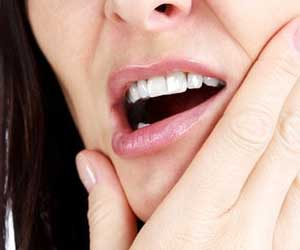- Home
- Editorial
- News
- Practice Guidelines
- Anesthesiology Guidelines
- Cancer Guidelines
- Cardiac Sciences Guidelines
- Critical Care Guidelines
- Dentistry Guidelines
- Dermatology Guidelines
- Diabetes and Endo Guidelines
- Diagnostics Guidelines
- ENT Guidelines
- Featured Practice Guidelines
- Gastroenterology Guidelines
- Geriatrics Guidelines
- Medicine Guidelines
- Nephrology Guidelines
- Neurosciences Guidelines
- Obs and Gynae Guidelines
- Ophthalmology Guidelines
- Orthopaedics Guidelines
- Paediatrics Guidelines
- Psychiatry Guidelines
- Pulmonology Guidelines
- Radiology Guidelines
- Surgery Guidelines
- Urology Guidelines
Denosumab lowers risk of Oral complications in women with osteoporosis

Osteonecrosis of the jaw (ONJ) is not common in patients taking postmenopausal osteoporosis medication, Denosumab, reported a study published in the "Journal of Clinical Endocrinology & Metabolism".
Osteonecrosis is a disease caused by decreased blood flow in bones. The lack of blood causes the bones to breakdown faster than the body can synthesize new bones. Osteonecrosis of the jaw, commonly called ONJ, occurs when the jaw bone is exposed and starves due to lack of enough blood supply. Most cases of osteonecrosis of the jaw happen after a dental extraction. The disease was first reported in 2003 in patients with advanced cancer receiving high doses of zoledronic acid and denosumab (medications also used to treat osteoporosis). Rates in cancer patients receiving high doses are around 1 percent to 2 percent per year. ONJ is less common in patients with osteoporosis receiving lower doses of these medications (about one case every 10,000 patient-years), yet there is still a lot of concern among dentists and patients.
“Our study covered the seven-year extension of the denosumab pivotal trial. We found dental procedures were common among these patients, but ONJ was rare with only 5.2 cases for every 10,000 patient-years. Not only was ONJ rare, but the 11 cases where the outcome is known to have healed,” said the study’s lead author, Nelson Watts, M.D., of Mercy Health in Cincinnati, Ohio. “The ONJ cases typically followed dental extractions or poorly fitting dentures. Of the 212 patients with dental implants, only one developed ONJ, and she continued denosumab, healed her ONJ, and still has the implant.”
Researchers used data from the seven-year FREEDOM Extension trial to assess information on oral procedures and cases of ONJ in women taking denosumab for postmenopausal osteoporosis. They found 45 percent of patients had at least one invasive dental procedure, but the overall rate of ONJ was low. ONJ incidence was higher in those reporting a dental procedure.
Watt, an associate researcher said- “My hope is our study will help patients and oral care providers be better informed about the low risk of ONJ compared to the fracture prevention benefits of antiresorptive therapy in women with postmenopausal osteoporosis,”.

Disclaimer: This site is primarily intended for healthcare professionals. Any content/information on this website does not replace the advice of medical and/or health professionals and should not be construed as medical/diagnostic advice/endorsement or prescription. Use of this site is subject to our terms of use, privacy policy, advertisement policy. © 2020 Minerva Medical Treatment Pvt Ltd